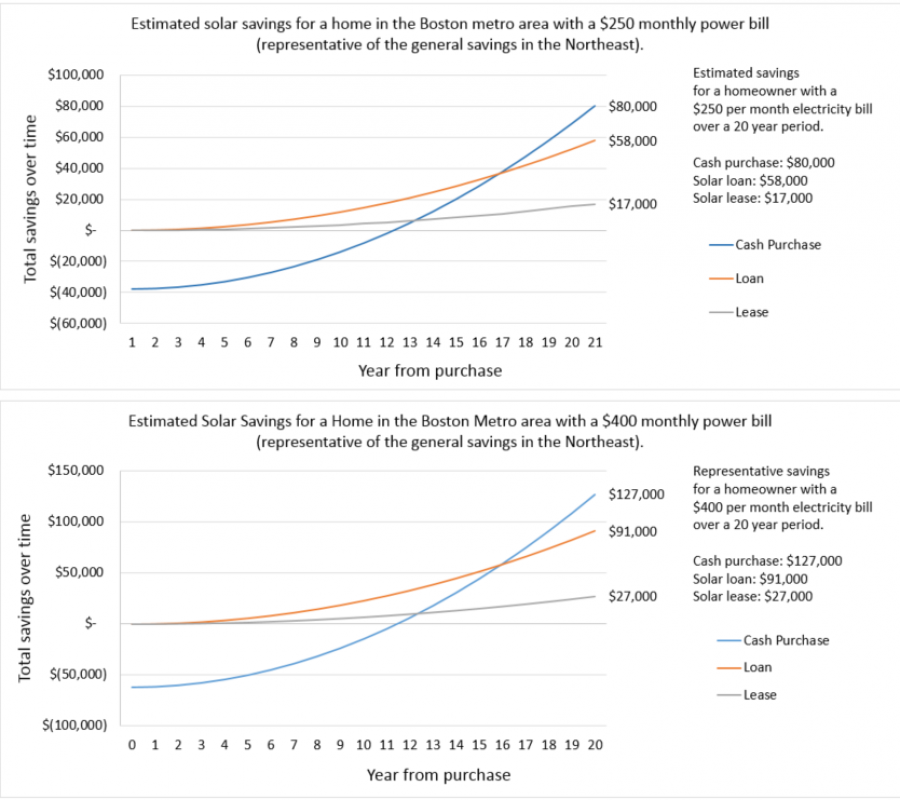How Much Can You Save?
Homeowners across the US are saving a significant amount of money on their utility bills by switching to solar – which is why more and more Americans are going solar than ever before. How Much do Solar Panels Cost? How Much Can You Save?
We provide more detailed examples of specific areas below. Among other solar energy pros, the savings come from a reduced power bill for all homeowners and from tax credits and incentives for those who choose to purchase their systems.
Try Our Solar Calculator to Estimate Your Savings
Let your house work for you. Enter your address to see how much you could save with solar.
Example of solar savings over time for the average homeowner –homeowner who went solar versus homeowner who didn’t go solar
Let’s take a look at someone in the Northeast or another high-cost state who goes solar with either solar panel loans or a solar lease.
In both cases, we assume that power prices increase on average 4.5% a year (a reasonable assumption). Keep in mind this is just an example – everyone’s costs and savings differ. We provide many more full examples of solar costs and savings below for different homes in different regions.
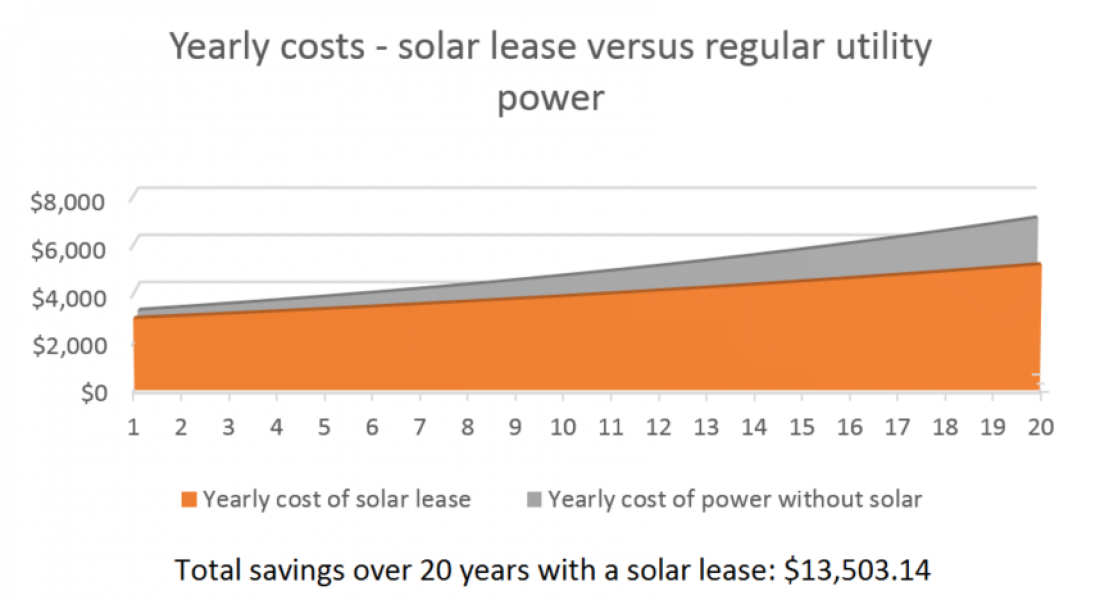
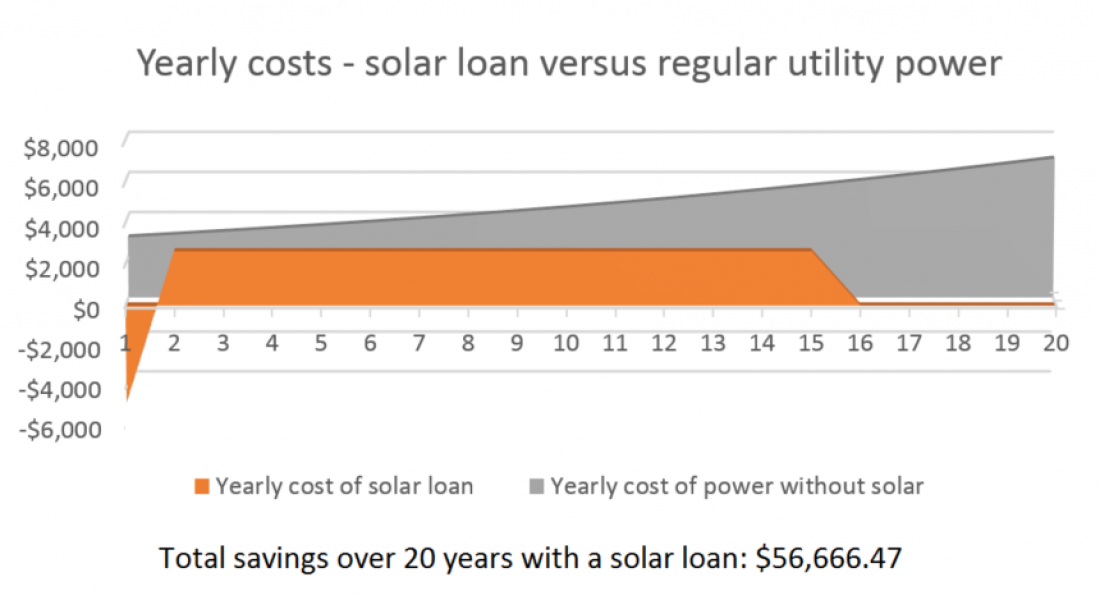
In the example to the left, you can see that going solar provides significant savings over 20 years in both a case where a homeowner takes out a solar loan or a solar lease. In both cases, we assume the homeowner has a $250 monthly electric bill and wants to replace that bill with the equivalent number of panels. The numbers may vary if funding is obtained through a source like the PACE energy program, but solar still offers significant savings.
For the solar lease, we assume a 20 year term, with an escalator of 3.0% per year, and starting at $250 per month. You can see that this homeowner would save $13,503.14 over 20 years by going solar.
For the solar loan, we assume that the payments are $224.71, which is equivalent to a 15 year loan at 7% for a $25,000 solar system. In the first year, the homeowner is able to claim the Federal Tax Credit for Solar, which is a 30% tax credit on the cost of a solar panel system, so we include a $7,500 tax credit in the first year, showing a savings of $4,803.38 in the first year. Over the 20 year time frame this homeowner would save $56,666.47 by going solar.
So how much would my savings and costs be with solar panels on my home?
How much could you save by going solar? The answer depends on how much you currently pay for power, how much available sunlight your home receives, the incentives and rebates that are available to you and your choice in financing options. Finally, how long do solar panels last for? Remember that your savings will continue to grow over the entire service life of your solar energy system.
How big is your monthly electricity bill?
Your monthly power bill can tell you how much power you use and how much that power costs you per watt. Power costs increase every year, usually by a government-allowed increase for utility companies – and solar is one of the best ways to lock in your power price instead of having it go higher over time. Residential power prices have increased 57% over the past 14 years in the US as a whole, and even more in many areas.
Learn more about energy costs and their impact on solar savings here.
The amount of power you use obviously is the biggest determinant of your solar savings. Many larger homes use disproportionate amounts of energy in the summer due to their air conditioning systems, and solar is a great solution, since you generate the most savings during the cost peaks on hot summer days.
Even higher savings can be realized on large homes in areas with tiered energy rates – when you install solar your power consumption goes down, dropping you out of the highest cost tiers. It works exactly like a tax exemption.
How much power prices rise in the future
Power prices will continue to rise, and consumers who buy all their power from their utility must accept whatever increased price their utility charges them each year. Certain areas of the country, like California and the Northeast, have seen especially large increases in power prices over the past ten years. Customers who have made the choice to switch to solar choose to control the rate they pay for power.
Learn more about California solar incentives and rebates.
The amount of sun your home receives
While most people assume this is the most important part of deciding if you should go solar, it is actually much less important than the above two factors. This is a combination of where in the country you live (California has more sun than Maine), what direction your roof faces (South, West, etc), as well as how much shading your roof receives which is determined by presence of any shading like trees or buildings.
Learn if solar is right for your home here.
How you choose to pay for your solar panels
The financing option you choose has a lot to do with your overall savings. There are four common ways to pay for solar: loans, leases, PPAs (solar power purchase agreements) and cash purchases.
Each solar financing method has its benefits and is appropriate for a different type of homeowner. Aside from the one-time payment of a cash purchase, each method also has an associated monthly cost for a set period of time.
So the costs and savings are variable in every case – can you at least estimate them?
Obviously, the factors discussed above impact your solar costs and savings quite heavily, so we put together three examples of homes on the West Coast (California), the Mountain states (Colorado), and the Northeast (Massachusetts) that have reasonably clear roofs and that decide to go solar. We ran the costs and savings for these homeowners at $250 and $400 monthly electricity bills, and lay out the values below.
Solar costs and savings on the West Coast: For an example home in San Diego, CA
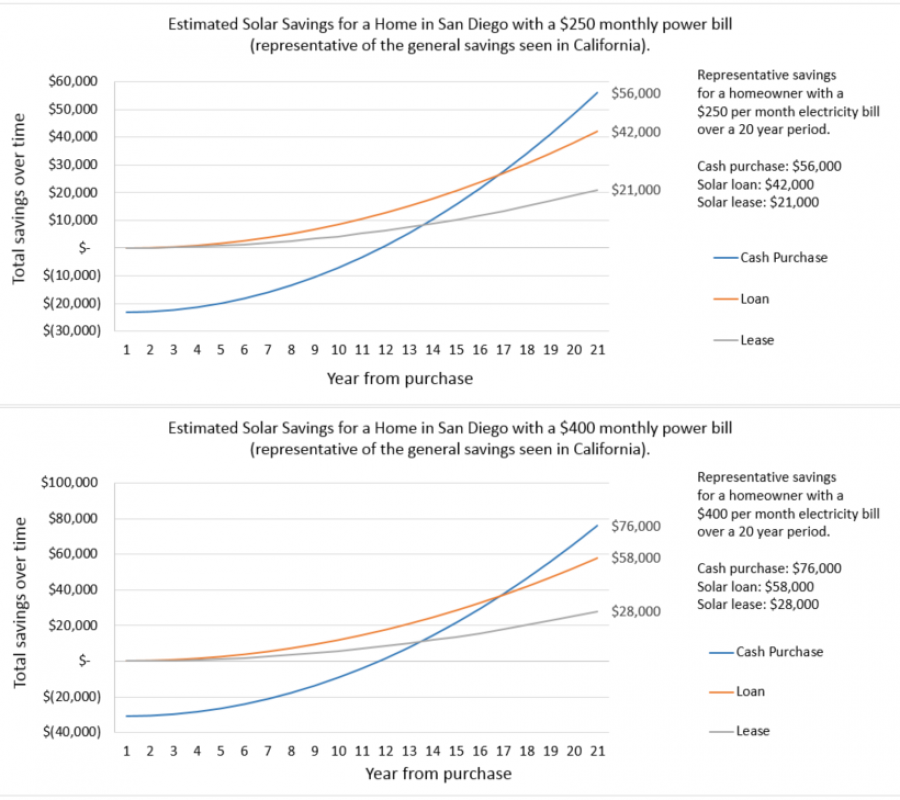
Solar costs and savings in the Mountain States: For an example home in Denver, CO
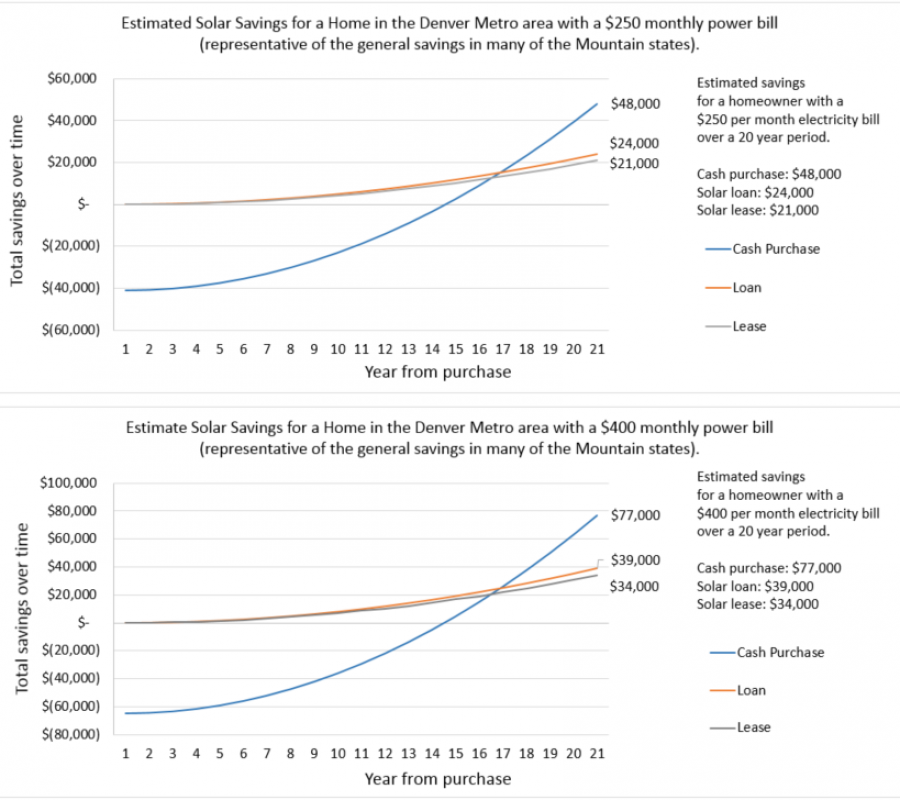
Solar costs and savings in the Northeast: For an example home outside of Boston, MA
